If you haven’t already read our info on planning and prepping for annual beds, check out the link with info on that first, then come back and read this blog. Nothing good comes from buying a whole bunch of annuals at the nursery, only to have them sit, dry out, and die while you prep your garden bed and get distracted by life. (At Rainbow Gardens we water annual transplants twice if not more each day to keep them healthy for you.) Once you’ve planned and prepped, it’s time to have some fun choosing and planting the annuals that will make your landscape come alive with seasonal color. Here are some tips for filling in your annual beds.
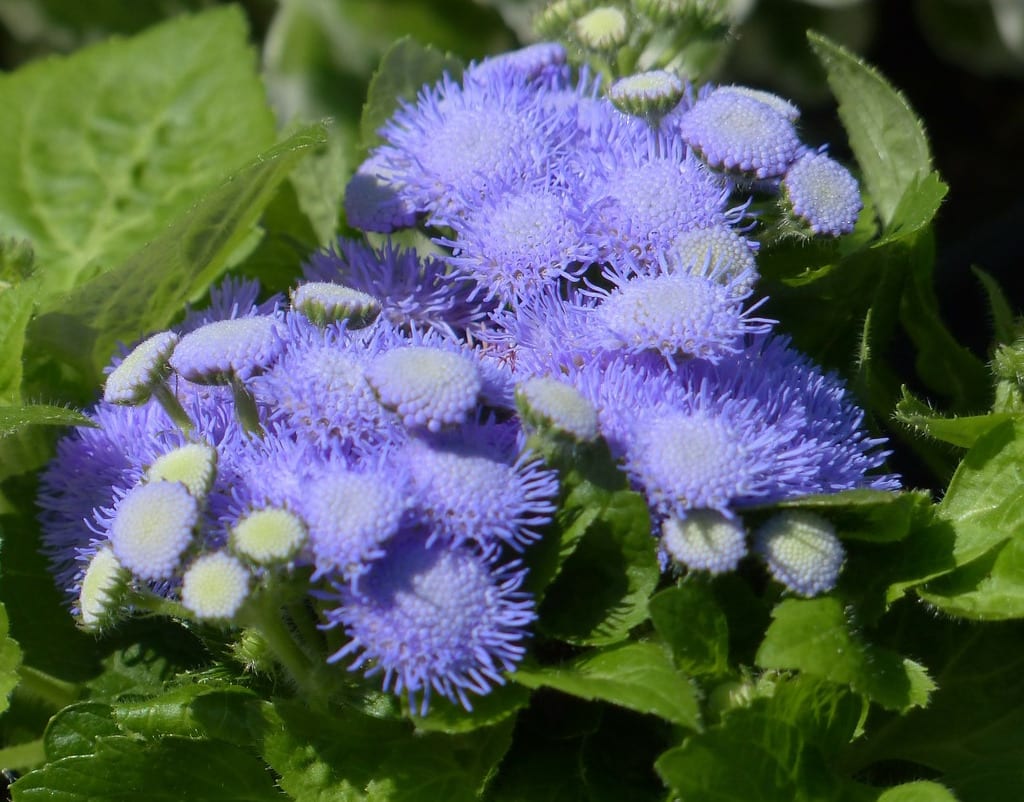
Pick ageratum as one of your warm-season, low-growing annuals.
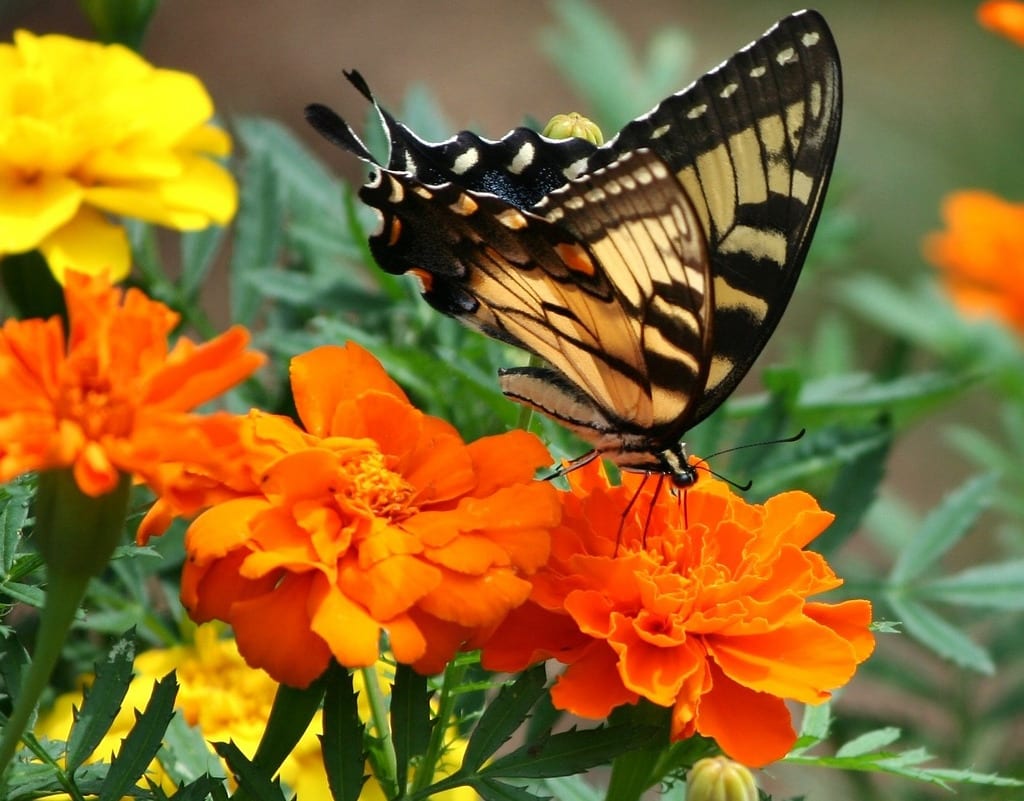

Marigolds are annuals that provide brilliant color and nectar for pollinators.
Choosing Your Annuals
- Select the right annuals for the upcoming season. You wouldn’t want to buy a bunch of cool season pansies late in spring when stores are putting them on sale, because they’ll burn up in a few weeks. Just like you wouldn’t want to buy a stash of vinca (periwinkles) to plant at the end of summer because they can’t take the cold around the corner. For a list of some of Rainbow Gardens’ favorite annuals by season see the following link:
- Opt for plants with lots of buds on them as opposed to plants already in full bloom. Especially when it comes to mums, zinnias, and large flowering annuals. This prolongs the bloom time you have in your landscape.
- Choose healthy plants. You can gently squeeze the sides of the nursery container to loosen the plant form it and inspect the plants rootball. The rootball shouldn’t be dust-dry, and the roots shouldn’t be wound tightly like spaghetti twisted on a fork.


Fan flowers are annuals that look great cascading out of containers. You can find them in purple, pink, and white hues.


The vivid colors, feathery texture, and heat tolerance of celosia make them highly sought after annuals.
Planting Your Annuals
- WATER: Water your prepared garden bed a day or two before planting. Your annual transplants should get a good watering before being placed in the beds as well. This gives them a great environment for their roots to get started in.
- SPACING: Follow the recommended spacing on the annual’s label or tag. If you plant too close, your annuals will not reach their full potential as they’ll be crowded and their health could suffer. If you plant too far apart, your bed will look weak and sparse as the annuals won’t fill in close enough to create that stunning visual impact we gardeners strive for.
- *For those of you who are more patient gardeners, many annuals are easy to seed directly into the garden. You’ll need make sure to: plant the seeds at the recommended depth, keep an eye out that your garden has consistent moisture for the seedlings to grow, and do some thinning of the seedlings to make sure that you’ll have the correct spacing between annuals at maturity. Reading the instructions on the seed packages helps a lot.
- DEPTH: Your annuals should be planted so the top of the rootball is level with the soil in your garden bed. Planting too deeply can be detrimental to your plants. (If the rootball is wound tightly around your plant when you take it out of it’s transplant container, loosen the roots with a couple of gentle squeezes (we call it ‘tickling the roots’). This way the roots will be encouraged to spread out and grow deeper in the garden.
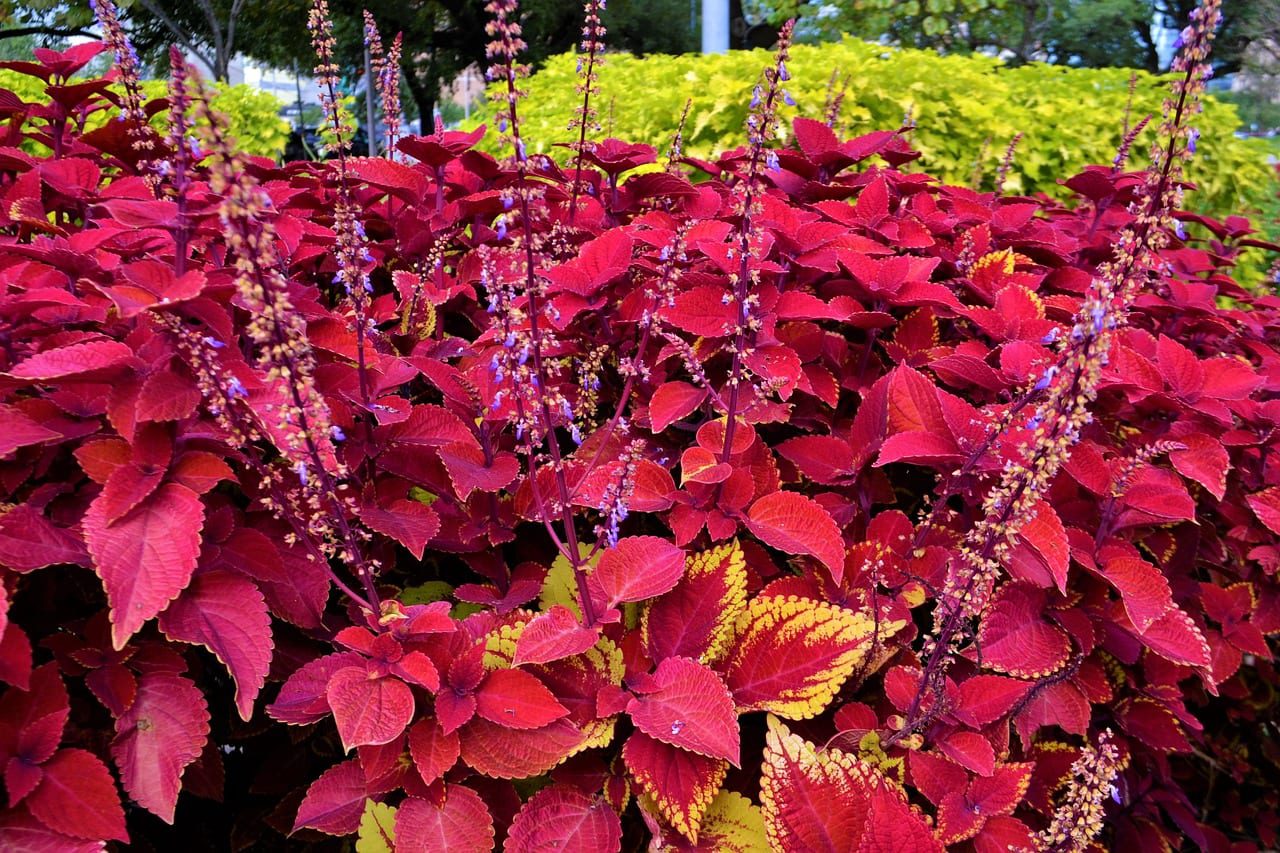

See the flower spikes on these coleus? These should be pinched back to make fuller, lusher plants.
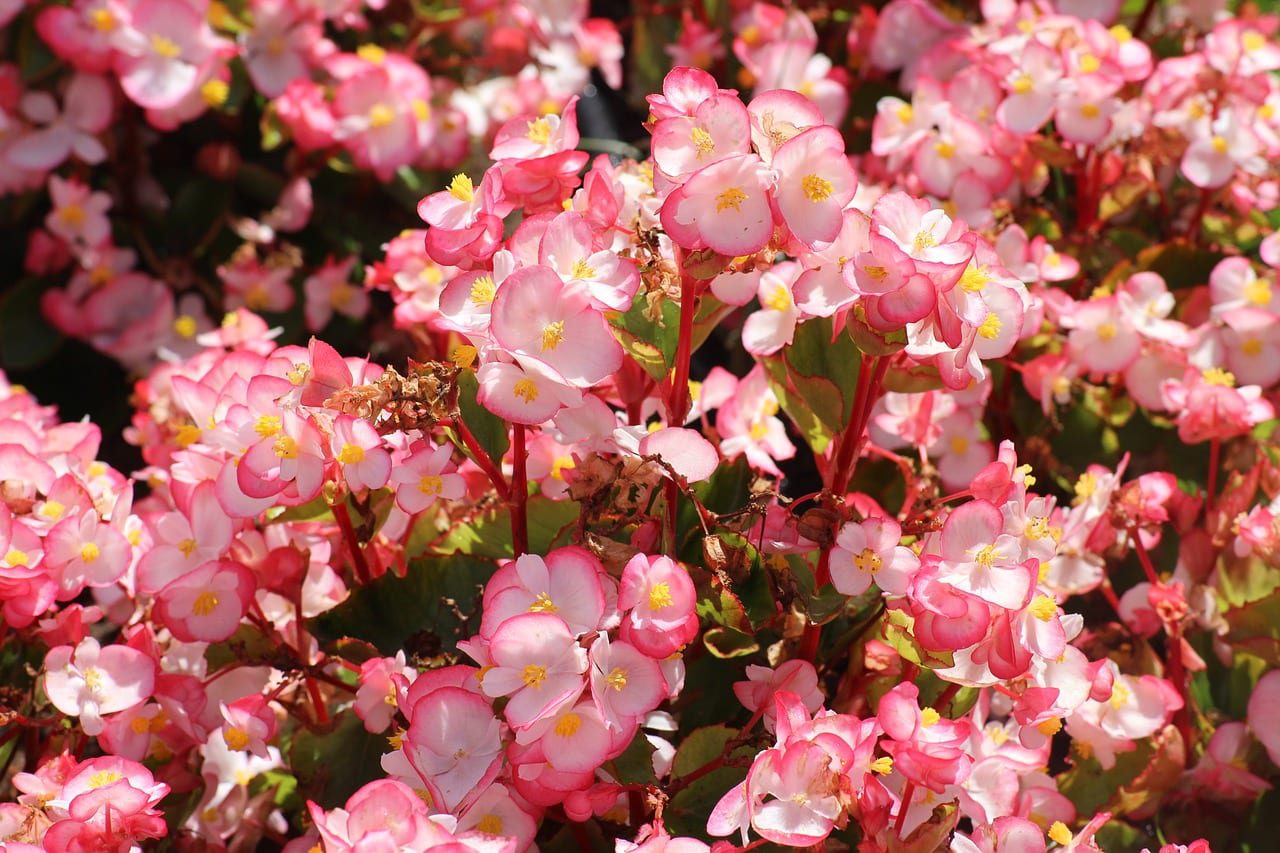

Begonias are annuals for shade or part sun. Waxy, red-leaved begonias can take even more sun than others begonias.
Maintaining Your Annuals
- WATER: Keep your annual beds consistently moist (but not soggy), watering in the mornings preferably, focusing the water around the roots and off of the foliage if possible. This helps to reduce fungal issues.
- FERTILIZE: Once your annuals are planted, water them in with a soluble fertilizer to give their roots a boost. Plan to fertilize your annuals every 3-4 weeks with a high nitrogen granular fertilizer.
- PINCH: Some annuals grow a little leggy after time, like coleus, periwinkles (vinca), copper plants, begonias, etc., and if you occasionally pinch their growing tips it helps to create a more lush and full plant.
The spring and fall seasons in San Antonio bring a huge variety of colorful, eye-catching annuals to Rainbow Gardens. Don’t let these amazing gardening seasons pass you buy. Come on in and explore our garden centers.
~The Happy Gardener

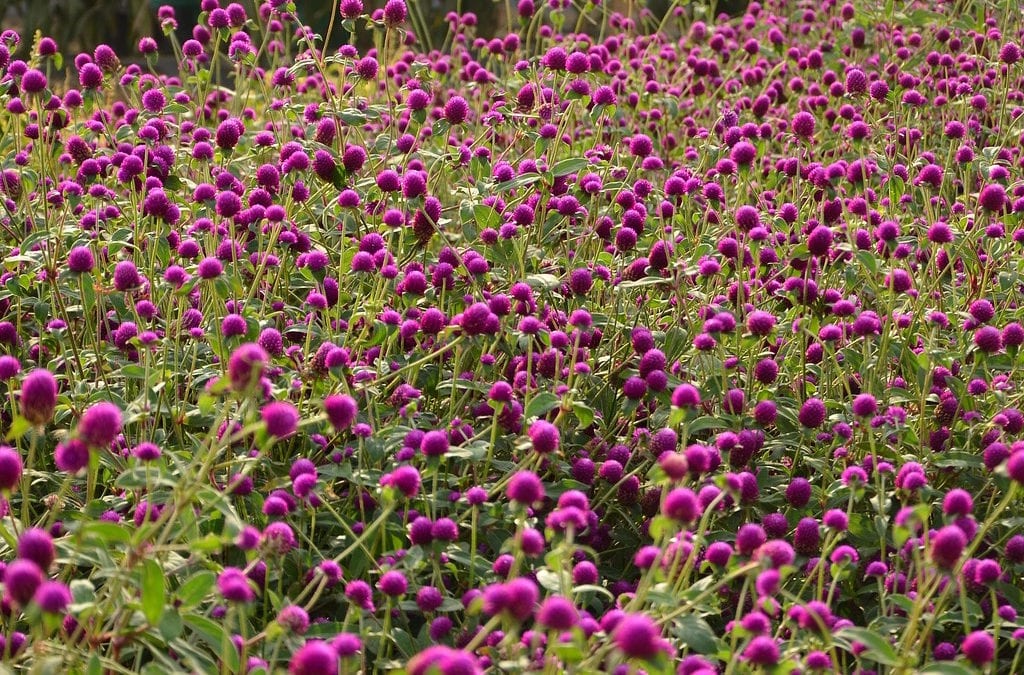
do you have weekly ad can’t find today
Hi Charlotte,
Our weekly ads are right where we always post them on our weekly ad and deals page on our website. Here is the link, weekly ad
You can always sign up for our e-newsletter to get the ads and other deals delivered to your email. The link is at the bottom of the weekly ad page.